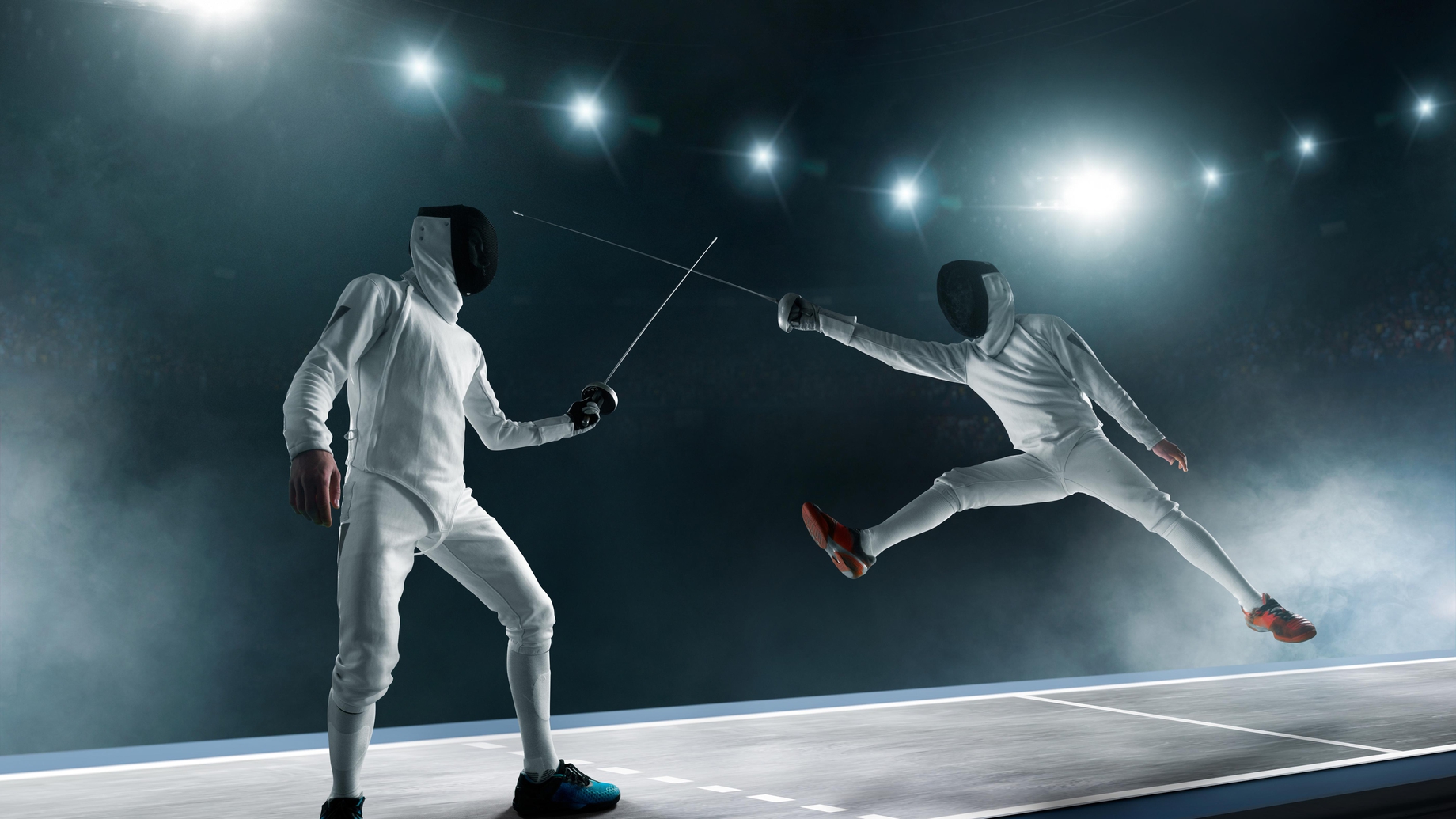Fencing is the ability to wield cold cutting and stabbing weapons in combat conditions. This is the purpose of fencing in its classical sense. Nowadays, fencing is the most interesting competitive fights between two fighters who are trying to “hit” (touch, prick) each other in the right places in order to score enough points to win.
This is a sport in which the main argument is not only skill, but also intelligence, honor, nobility and the deepest respect for your opponent. Fencing to this day remains a historically elite sport, because the right to wear a sword was granted only to the nobility and the upper class.
Story
Fencing is probably one of the oldest sports, as it developed directly from duels and further flourished and developed as long as there were wars. In the old days, duels took place, both between two opponents, and between entire armies. The Germanic tribes that conquered the Roman Empire were perhaps the first people to recognize the duel with swords to do justice or as a means to settle accounts with the offender.
Under Germanic influence, the duel spread throughout Christendom. Already during the reign of Charlemagne, the so-called “God’s Judgment” was practiced, when victory in a duel served as evidence of the correctness of one of the disputing parties. This practice continued throughout the Middle Ages as an integral part of chivalry.

Description
Competitions for men are held in three types of weapons – rapier, saber, sword, for women – rapier and sword. The contact of the weapon with the struck surface of the opponent is determined by the judge and with the help of an electrical fixator.
Sports foil with a total length of up to 110 cm and a weight of up to 500 g, the hand is protected by a round guard with a diameter of 12 cm.
Sports saber up to 105 cm long, weighing up to 500 g, a steel elastic blade of trapezoidal variable section with a guard protecting the hand.
A sports sword with a total length of no more than 110 cm and a weight of up to 770 g, a stabbing weapon with a flexible trihedral steel blade, the hand is protected by a guard with a diameter of 13.5 cm.
In foil fights, injections are allowed only in the torso, on swords – in all parts of the body, except for the back of the head not protected by a mask, on sabers – injections (or blows) in all parts of the body above the waist. Fights are held on a fencing track 14 m long and 1.8 – 2 m wide.
Athletes perform in light protective jackets covered with metallized fabric (rapier, saber), in masks with a metal mesh and in a glove on an armed hand.

Fencing originated in Spain in the 15th century. It was there that it became most popular. In 1567, the fencing academy was established by King Charles IX. If we turn to the cultural side of the issue, it is hard to miss such a nuance as the motto of fencing. It was formed back in 1650, when Molière said the following words: “Fencing is the art of striking without receiving them.”
After a while, in addition to Spain, other countries began to participate in the life and development of fencing. So, for example, in 1765, the French proposed the use of special fencing masks in battle to increase the safety of this sport.
The first Olympic Games, which, as you know, were held in Athens, included this sport in their program. Therefore, it is not surprising that fencing has become so popular all over the world.
What and how injections are counted?
Modern swordsmen compete in three types of weapons: rapier (men and women), sword, saber (men). In the 1990s saber and sword competitions ceased to be purely male.
In foil fencers, the actual thrusts (that is, delivered) are injections that are delivered to the striking surface (the entire torso in front and back to the waist). Thrusts delivered to the hands, mask, or legs do not count, but when they are delivered, the fight stops.
For saber fighters, thrusts inflicted with a point and blows inflicted with a blade are considered valid. The striking surface in saber fencing is all parts of the body that are above a horizontal line drawn through the tops of the angles formed by the body and hips of the athletes when they are in a fighting stance. Blows (shots) inflicted on an unaffected surface are not counted, but the fight does not stop.
For epee fencers, injections made with a point in any part of the fencer’s body are valid.
